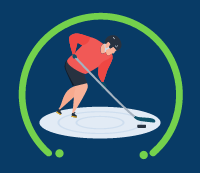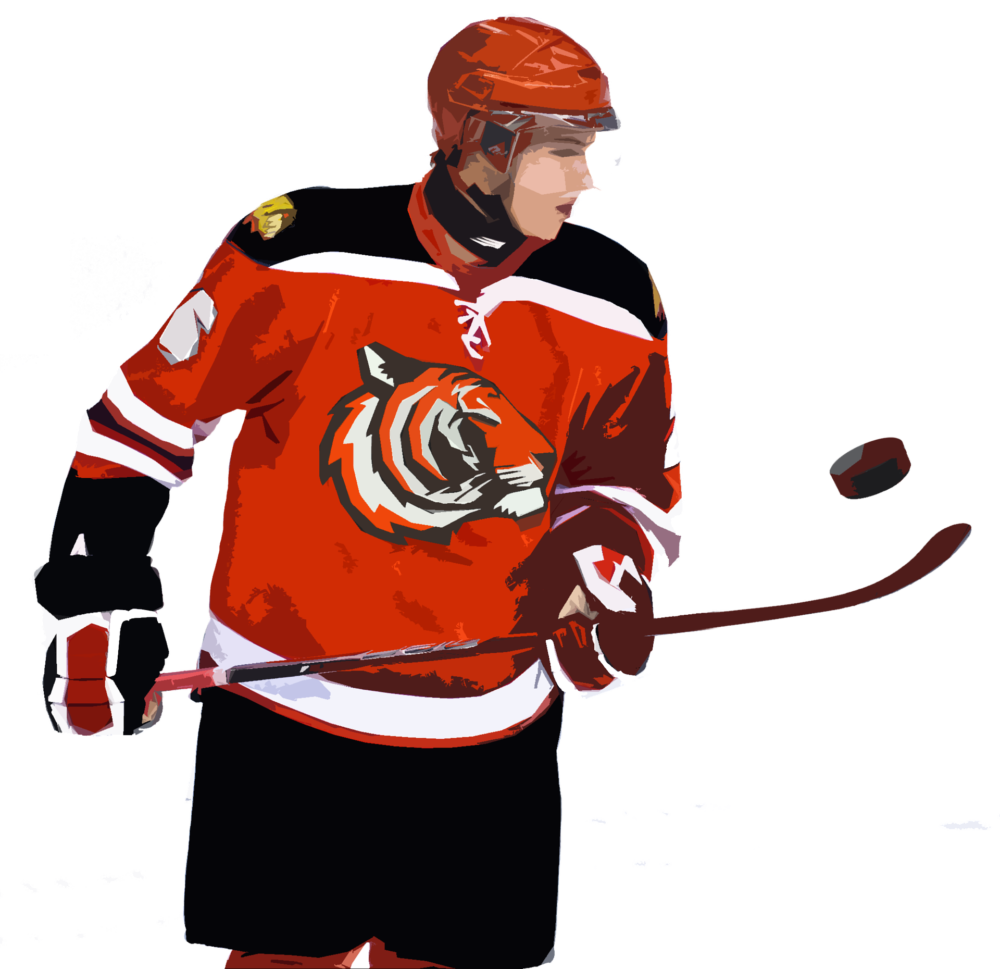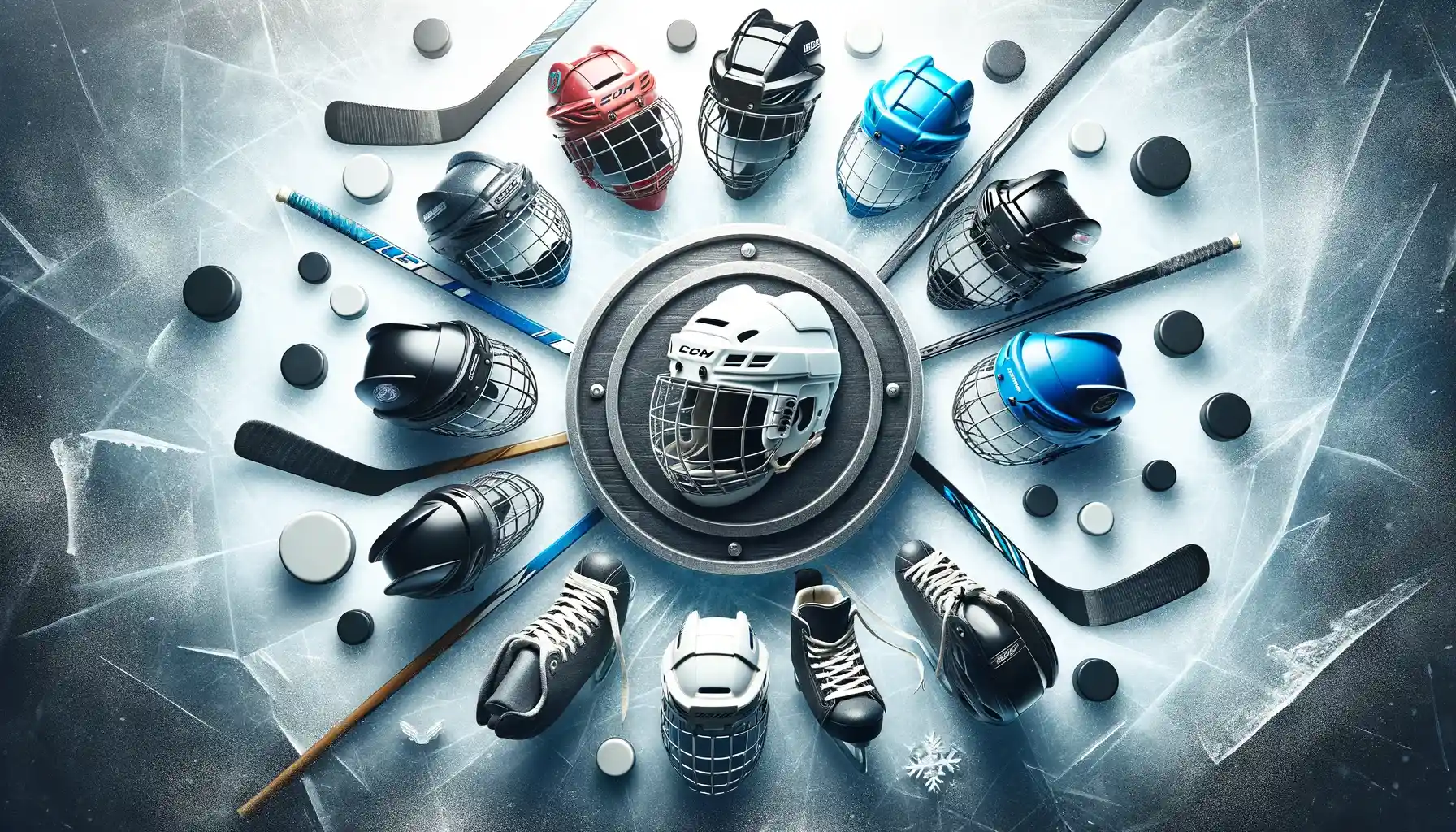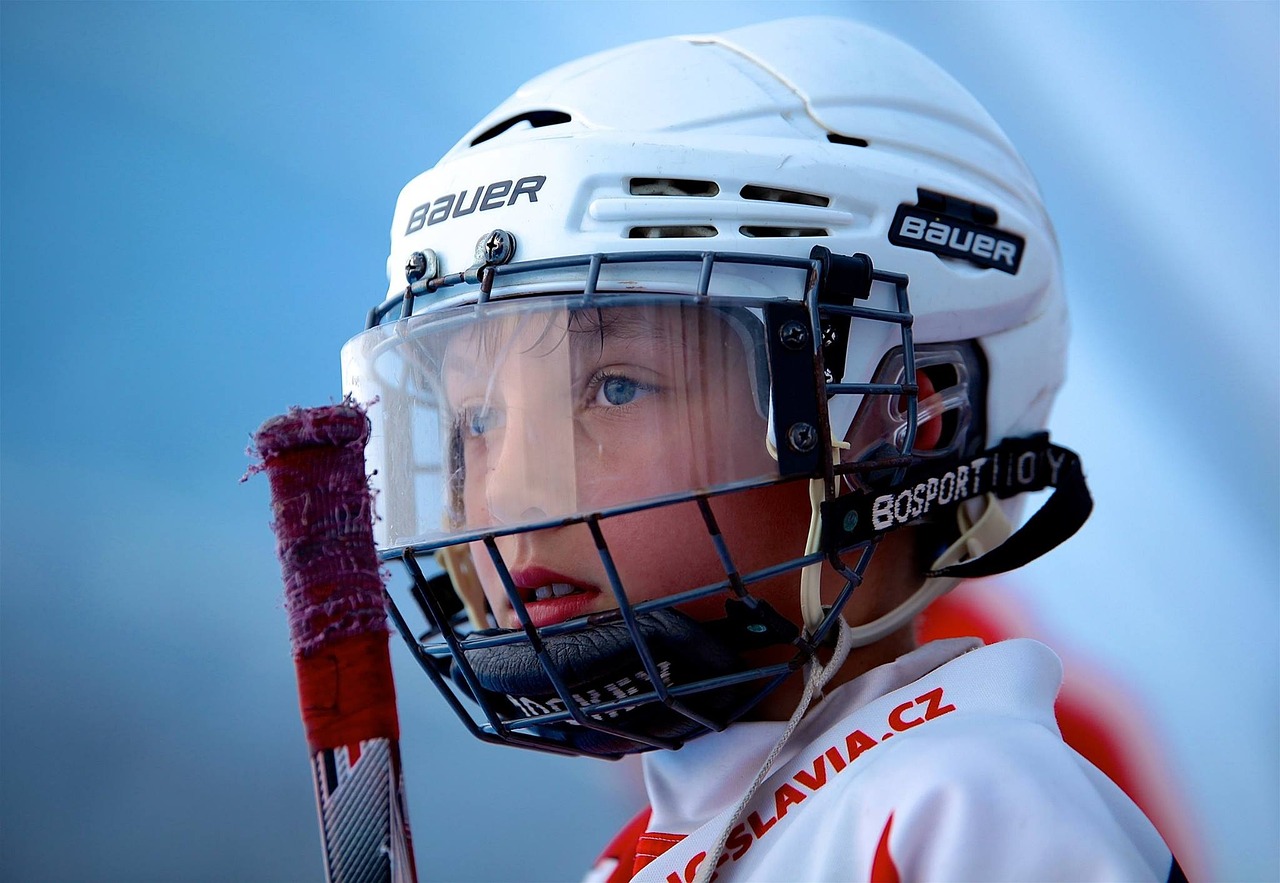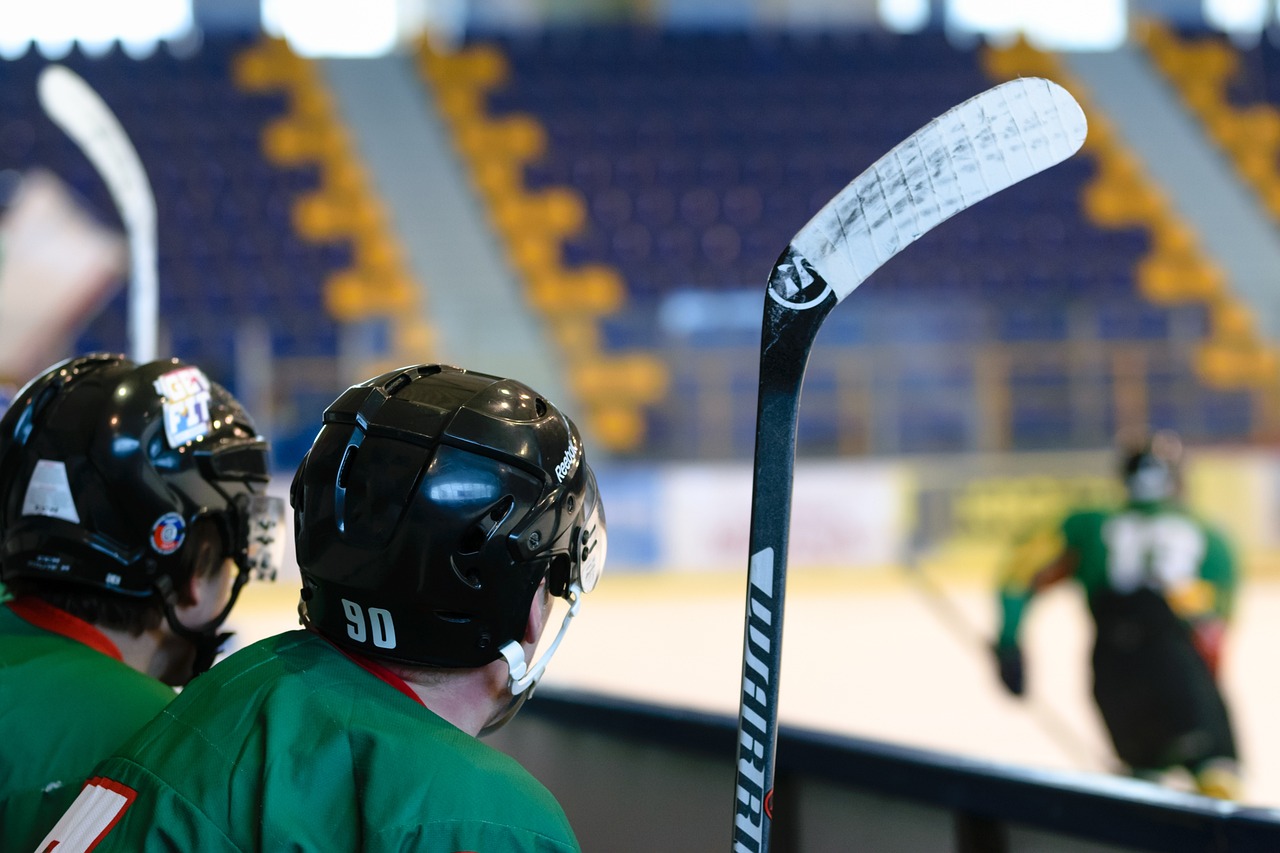Wearing a properly sized hockey helmet isn’t just about compliance — it’s about real protection. As someone who’s taken more than a few pucks and elbows over the years, I can tell you: a helmet that fits right makes a huge difference. Whether you’re lacing up for your first youth league or gearing up for men’s league playoffs, your helmet should feel like a natural extension of your body — not a bulky afterthought.
In this udpated guide, I’ll walk you through how to size your helmet correctly, compare top brands like Bauer and CCM, and help you choose a model that truly fits — your head and your style of play.
- Start by measuring your head just above the eyebrows and ears for an accurate helmet size in inches or cm.
- Use updated 2025 sizing charts from Bauer, CCM, and Warrior — each brand fits differently based on head shape.
- A properly fitted helmet should sit level, feel snug, and pass the shake test without causing pressure points.
- All helmets must meet HECC or CSA certifications and be replaced every 5–7 years or after serious impacts.
- Top models like Bauer Re-Akt, CCM Tacks 720, and Warrior Alpha One Pro offer advanced safety tech and comfort.
- Goalie helmets follow different sizing and protection standards — ensure correct vision, fit depth, and facial coverage.
- Never use second-hand helmets; check certification stickers, liner condition, and adjustment systems before each season.
Understanding the Basics of Hockey Helmet Sizing
Hockey helmets are designed to do one thing extremely well: reduce the risk of head injury. But even the best helmet can fail if it doesn’t fit properly.
Sizing is more than just matching a number to a chart. It’s about how that helmet interacts with your unique head shape; round or oval, narrow or wide — and whether the internal padding and adjustment system can keep it snug without causing pressure points.
The two most important things to know before choosing a helmet:
- Your head circumference — measured about an inch above your eyebrows and around the widest part of your head.
- Your brand preference — Bauer, CCM, and Warrior all use slightly different internal shapes and sizing logic. What fits you in one brand may feel off in another.
From there, everything flows: fit, comfort, performance, and safety. A properly sized helmet should sit level on your head, snug enough not to wobble when you shake but without digging into your temples. Most brands now offer tool-free adjustment systems, so once you get your measurement right, dialing in the fit is easier than ever.
How to Measure for a Hockey Helmet (2025 Fit Guide)
Getting an accurate measurement is the first and most important step in finding a helmet that protects properly. It takes less than a minute — but you’ve got to do it right.
Step-by-Step Measurement Process
- Use a flexible tape measure or string. Wrap it around your head about ½” to 1″ above your eyebrows and ears — this is typically the widest part of your skull.
- Keep it snug but not tight. You want the tape flat and flush, not squeezing your head.
- Record the measurement in both inches and centimeters. Most sizing charts use both, so having both on hand makes comparison easier.
- Use a mirror or get help. If you’re using a string, mark it and measure it against a ruler. Better yet, have someone assist you for accuracy.
Once you’ve got your measurement, the next step is matching it against the right brand-specific sizing chart. Bauer, CCM, and Warrior don’t size identically — even if the numbers look similar. I’ll break that down in the next section with updated 2025 charts and notes on how fit differs by model and player type.
Hockey Helmet Size Charts and Sizing Guides
Understanding the basics of helmet sizing is pivotal. A general hockey helmet size chart helps as a preliminary guide, but keep in mind the importance of brand-specific nuances.
Hockey Helmet Size Chart:
| Helmet Size | Age Range | Hat Size | Circumference (in.) | Circumference (cm) |
|---|---|---|---|---|
| X-Small | 4 – 6 | 6 1/8 – 6 3/4 | 19.3 – 21.4" | 49 – 54.5 cm |
| Small | 7 – 11 | 6 1/2 – 7 | 20.6 – 22.2" | 52.3 – 56.4 cm |
| Medium | 12 – 16 | 6 7/8 – 7 3/8 | 21.9 – 23.3" | 55.6 – 59.2 cm |
| Large | 17+ | 7 3/8 – 7 3/4 | 22.7 – 24.5" | 57.7 – 62.2 cm |
| X-Large | 17+ | 7 5/8 – 8 1/8 | 24 – 26" | 61 – 66 cm |
Note: Always confirm helmet fit using brand-specific charts and try on the helmet whenever possible.
Brand-Specific Sizing Charts and How They Differ
Differences in sizing charts across Bauer, CCM, and Warrior underscore the importance of understanding each brand’s approach to helmet sizing. Below are the updated sizing charts incorporating the provided data:
1. Bauer Helmet Sizing Chart
| Size | Circumference (inches) | Circumference (cm) |
|---|---|---|
| Small | 20.3" – 21.9" | 51 – 55.5 cm |
| Medium | 21.5" – 23.4" | 54.5 – 59 cm |
| Large | 22.6" – 24.4" | 57.5 – 62 cm |
2. CCM Helmet Sizing Chart
| Size | Hat Size | Circumference (inches) | Circumference (cm) |
|---|---|---|---|
| X-Small (Junior) | 6 – 6 5/8 | 18.9 – 20.87" | 48 – 53 cm |
| Small | 6¼ – 7 | 19.88 – 22.05" | 50.5 – 56 cm |
| Medium | 6¾ – 7⅜ | 21.46 – 23.23" | 54.5 – 59 cm |
| Large | 7¼ – 7¾ | 22.64 – 24.41" | 57.5 – 62 cm |
3. Warrior Helmet Sizing Chart
| Size | Hat Size | Circumference (inches) | Circumference (cm) |
|---|---|---|---|
| Small | 6⅝ – 7 | 21.26 – 22.05" | 54 – 56 cm |
| Medium | 7 – 7⅜ | 22.05 – 23.23" | 56 – 59 cm |
| Large | 7⅜ – 7¾ | 23.23 – 24.41" | 59 – 62 cm |
How Should a Hockey Helmet Fit? (Fit Test Checklist for 2025)
Once you’ve got the size right, the real test is how the helmet feels when it’s on your head. A well-fitting helmet is secure, balanced, and comfortable — it won’t shift when you move, and it won’t pinch or dig into your temples.
Here’s how to check your fit:
- Level Positioning: The helmet should sit level on your head, not tilted back or forward. The front rim should rest about one finger width above your eyebrows.
- Snug All Around: The helmet should feel snug from all sides — no gaps between your head and the liner.
- Shake Test: Shake your head side to side and up and down. The helmet should stay in place without wobbling.
- Chin Strap Fit: You should be able to fit only one finger between the strap and your chin. Any looser and the helmet may shift on impact.
- No Pressure Points: There shouldn’t be any sharp pressure or discomfort after wearing the helmet for a few minutes. If you feel tightness on the forehead or temples, you may need a different size or head shape profile.
Helmet Certifications and When to Replace Your Helmet (2025 Standards)
No matter how good a helmet looks on the outside, if it’s past its certification date or has internal damage, it’s not doing its job. Hockey helmet certifications exist for a reason: to ensure that your gear meets baseline safety standards and is structurally sound when you take the ice.
North American Certification Standards
- HECC (USA): The Hockey Equipment Certification Council mandates certification for all youth players. Helmets carry a sticker with an expiration date — now extended to 6.5 years from the manufacturing date.
- CSA (Canada): Hockey Canada enforces CSA Standard Z262.1 for all levels under its jurisdiction.
If your helmet has an expired HECC sticker, it’s no longer legal for play in sanctioned games — and more importantly, it may no longer offer reliable protection.
International Certification Standards
- CE Mark (Europe): Indicates compliance with European safety requirements.
- IIHF (International): Requires compliance with either HECC, CSA, or CE depending on the region of play.
Signs It’s Time to Replace Your Helmet
Even if the certification date hasn’t passed, your helmet may still need replacing if:
- The shell has visible cracks or significant scuffs
- The liner is compressed, loose, or degraded
- The adjustment system or chin strap no longer holds securely
- The helmet has taken a serious impact
Helmet Technologies That Affect Fit and Protection
Modern hockey helmets aren’t just foam and plastic — there’s a science to how they absorb impact, fit your head, and stay comfortable through every period.
Common Liner Materials
- EPP Foam (Expanded Polypropylene): Lightweight and offers excellent impact absorption. Used in many premium models.
- VN Foam (Vinyl Nitrile): Softer, more forgiving foam often used in recreational helmets.
- Multi-Density Foam: Combines layers of different foams to balance comfort and protection. Found in most elite-level helmets.
- D3O Smart Foam (CCM): A high-tech material that remains soft during play but stiffens upon impact to absorb shock.
Each foam type affects fit slightly. EPP tends to feel stiffer out of the box, while VN conforms faster but compresses over time.
Fit and Adjustability Features
- Occipital Locks: A rear cradle that secures the helmet to the back of your skull — standard in Bauer’s Re-Akt and CCM’s Tacks lines.
- Tool-Free Adjustment Systems: Most modern helmets allow you to adjust size with side tabs or a rear dial.
- Custom Padding Kits: Some helmets include optional pads to fine-tune fit for different head shapes.
- Air Bladders (High-End Models): Allow ultra-precise micro-adjustments using inflatable compartments.
Goalie Helmet Sizing and Considerations (2025 Update)
Goalie helmets are a different beast. They’re built to handle direct puck impacts, offer more facial protection, and are often customized to a higher degree. But the fit principles still matter — a goalie mask that shifts on impact or limits visibility is a liability.
Key Sizing Differences
- Measurement Method: Just like player helmets, start by measuring head circumference. Most goalie masks follow similar size brackets (Small, Medium, Large) but check the brand chart.
- Deeper Shell Fit: Goalie helmets tend to sit deeper and cover more of the neck and jawline. Make sure there’s full coverage without pinching.
Protection Priorities
- Facial Coverage: The cage or shell must prevent sticks and pucks from getting through. Look for certifications that meet IIHF or HECC goalie mask standards.
- Shock Dispersion: Goalies face higher-speed puck impacts. High-end models include layered foams and polycarbonate shells designed to spread out force.
- Ventilation: A stationary position doesn’t mean you stay cool. Proper venting keeps goalies comfortable and alert.
Fit Tips for Goalies
- Perform the same shake and snug test — a goalie mask should never shift under your glove or after a save.
- The mask should rest level with your field of vision and align cleanly with your jaw.
- If customizing, work with a certified technician or pro shop to ensure proper padding placement.
Frequently Asked Questions About Hockey Helmet Sizing
How do I measure my head for a hockey helmet?
Use a soft measuring tape to measure around your head just above your eyebrows and ears — the widest part of your skull. Make sure it’s level and snug but not tight. Record the measurement in both inches and centimeters.
How tight should a hockey helmet be?
Snug but not painful. It should stay in place during movement but not cause pressure points or discomfort. One finger should fit between your chin and the strap.
Can you make a hockey helmet wider?
Most modern helmets include adjustment systems to slightly alter the fit. However, a helmet that feels too tight from the start is likely the wrong size or shape for your head.
How long do hockey helmets last?
Typically 5 to 7 years. All HECC-certified helmets come with an expiration date (now 6.5 years from manufacturing). Replace earlier if damaged.
Are youth and adult helmets sized differently?
Yes. Youth helmets may include more adjustability and are sized with growth in mind — but still must fit snugly now. Never size up hoping they’ll “grow into it.”
Which brands run large or small?
Bauer helmets often suit oval-shaped heads. CCM is more forgiving for rounder heads. Warrior tends to fit balanced profiles. Try on different brands to see what works for you.
What’s the safest youth hockey helmet?
One that fits correctly and is HECC/CSA certified. Models with multi-density or D3O foams, a strong cage, and good coverage are best. Bauer Re-Akt Youth and CCM Tacks Youth are top picks in 2025.
Should I buy a used hockey helmet?
Strongly discouraged. You can’t confirm its impact history, internal damage, or expiration status. Always opt for new, certified equipment.
Does hair affect fit?
Yes. Measure and test your helmet with your usual game-day hairstyle, especially if you wear ponytails, braids, or buns.
What helmet size is 24 inches?
A head circumference of 24 inches (about 61 cm) typically falls into the Large or XL category depending on the brand. Always confirm with the specific brand’s size chart.
Final Thoughts
Getting your hockey helmet sizing right isn’t just a one-time task — it’s an investment in your safety every time you hit the ice. A proper fit means the difference between a helmet that protects and one that shifts when it matters most.
Having played and coached over the years, I’ve seen what happens when players underestimate fit. Helmets that are too loose, too old, or the wrong shape don’t just feel wrong — they fail under pressure. And the truth is, even the best helmet can’t protect you if it’s not adjusted properly.
Whether you’re a parent shopping for a youth player or a veteran upgrading your gear, always measure, compare charts, and test the fit in real time. Prioritize certification, replace gear before it degrades, and stay up to date with safety standards.
Your brain is worth protecting. Start with the right helmet, fit it properly, and don’t cut corners.
Need help choosing between brands or models? Head over to our comparison guide or drop a comment — I’m always happy to help players make smarter, safer gear decisions.
Top Hockey Helmets from Leading Brands
Choosing a helmet isn’t just about sizing. it’s also about selecting the right technology, protection level, and comfort features for your style of play. Whether you’re new to the game or skating competitively, these models consistently rank among the best for 2025:
| Brand | Model | Key Features | Best For |
|---|---|---|---|
| CCM | Tacks 720 | D3O smart foam, I.Q.Shion memory foam, tool-free fit system | Players wanting elite-level safety |
| CCM | FitLite 80 | Lightweight shell, dual-density liner, CSA/HECC certified | Junior and intermediate players |
| Bauer | Re-Akt 150 | VTX foam, occipital lock, FreeForm Adjustment System | All-around high-performance skaters |
| Bauer | Hyperlite | PORON XRD foam, low profile, ultralight construction | Speed-focused, elite athletes |
| Warrior | Alpha One Pro | One-piece shell, AdaptFit 360 dial, dual-density VN + EPP liner | Custom comfort seekers |
| Warrior | Covert PX+ | Multi-layered protection, traditional fit, pro-style aesthetics | Versatile use from rec to pro |
To further enhance your knowledge and ensure you’re fully equipped for the game, consider exploring these additional resources:
- Comprehensive Guide on Buying Hockey Skates – Learn how to select the best skates that complement your helmet for optimal safety and performance.
- Top Hockey Skate Brands – Discover which brands offer the best quality and value in hockey skates.
- Choosing the Right Hockey Skate Hollow – Understand the importance of skate blade hollows and their impact on your skating ability.
- How to Sharpen Hockey Skates – Master the essential skill of skate sharpening to maintain peak performance on the ice.
- Hockey Taping Techniques – Learn the best practices for taping your hockey stick and other equipment.
- Understanding the Hockey Jersey Fight Strap – Get insights into this unique feature of hockey jerseys and its role in the game.
- Comprehensive Guide to Ice Hockey Equipment – A detailed look at all the equipment you need to play hockey safely and effectively.
